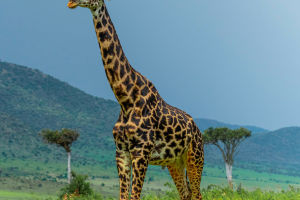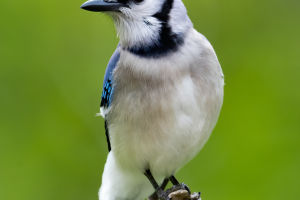The most giant bird in the world is the ostrich; the smallest is the hummingbird. Although these two birds differ significantly in size, they both belong to the class of avian animals, and each has its characteristics and advantages.
Due to the significant difference in size between these two avian species, many biologists worldwide have started to study the internal differences between these two birds.
1. How big is the difference in size between ostriches and hummingbirds?
An ostrich has a body length of over 2.5 meters and weighs over 300 pounds. So, figuratively speaking, an ostrich is like two standard-sized people stacked on each other.
Moreover, ostriches have highly developed muscles, enabling them to avoid risks from enemies effectively. Additionally, ostriches rank relatively high in the food chain, and most animals do not dare to provoke them, considering their formidable combat abilities.
Hummingbirds, on the other hand, are tiny. From a distance, the size of a hummingbird is similar to that of an ordinary bee. However, hummingbirds have higher aesthetic value than regular bees, and many people consider hummingbirds as works of art. The length of a hummingbird is only four centimeters, and its weight is less than three grams. Therefore, it would take thousands of hummingbirds stacked together to match the size of an ostrich.
Furthermore, the muscles of hummingbirds are not as developed as those of ostriches since they primarily feed on flower nectar or small insects. Therefore, hummingbirds are particularly diligent, often going out early and returning late to search for their food, and each return is usually laden with a good harvest.
2. Advantages and disadvantages of ostriches and hummingbirds
Although ostriches are huge birds, even large terrestrial reptiles dare not bully them easily. The feathers on their wings are markedly different from the hard wings of other flying birds; they are insulating. Additionally, there are claws on them.
The powerful legs are devoid of feathers and stand on two toes, with the larger one resembling a hoof. This unique adaptation of ostriches allows them to dash to deal with sudden dangers. Ostriches have enormous eyeballs with thick black eyelashes, the most extensive among terrestrial animals; only whale eyeballs are more comprehensive.
Ostriches have excellent vision; one eyeball weighs 60 grams and can see objects 3 to 5 kilometers away. Their nictitating membranes have the function of blocking sand and protecting their eyes.
However, they also have a significant disadvantage: they cannot fly. This is similar to a terrestrial animal that cannot run but only crawl. Therefore, the life of an ostrich is quite tragic, as it cannot soar high like other birds of its kind but can only watch its species glide through the skies.
On the other hand, hummingbirds are highly diligent and are even considered the national bird in some countries. Hummingbirds can extract nectar by extending their long tongues. The tips of their tongues are forked, and there are transverse comb-like structures at the end to scrape nectar (like a compound of spoon and fork).
In addition to their specialized beaks and tongues, hummingbirds' hovering skills are the secret to their ability to feed on nectar. Their shoulder joints are unique, allowing their wings to move in an eight-shaped pattern and fly up, down, forward, and backward effortlessly. With the addition of dozens of wing flaps per second, they can hover freely and sip nectar.
However, due to their small size, surviving as a hummingbird is difficult.


